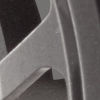FAQS
A fly reel holds the fly line and backing and is essential equipment for anyone who wishes to begin fly fishing. Its braking system applies drag that puts pressure on the line and helps you control and bring in your fish.
Fly rods have a designated weight size designed to hold a specific range of fly line weights (WT). Different manufacturers rate reel size in different ways, but all reel sizes boil down to the line weight they’re designed to hold. Orvis reels are sized using Roman numerals I, II, III, IV, and V, and coordinate with the following line weights:
- For Orvis fly reel size I, choose 1–3 WT fly line
- For Orvis fly reel size II, choose 3–5 WT fly line
- For Orvis fly reel size III, choose 5–7 WT fly line
- For Orvis fly reel size IV, choose 7–9 WT fly line
- For Orvis fly reel size V, choose 9–11 WT fly line
When shopping for a fly reel, first decide what type of fishing (target species, water type, average conditions) you plan to fish most. From there you can determine a preferred line weight, and then the reel size which will fit that line weight.
Target Species:
- Trout & Freshwater Bass: The most important aspect of choosing a trout and bass fly reel is to match the weight of the line to your rod and reel. The most versatile freshwater rod is a 5 WT, designed to cast 5 WT fly line, and paired with a size II or III fly reel (both designed to hold 5 WT line). Go with a size larger if you’re fishing streamers and have a streamer-specific line or you’ll be adding longer sink tips. This makes gathering up line easier as you reel in.
- Saltwater Species: You’ll need a strong drag and a large reel to haul in saltwater species, which often pull much harder than freshwater fish. Again, match the line weight to the reel size and the rod WT, but consider over-sizing it a bit if your desired line weight is on the edges of sizing. This allows for more backing, which you may need when a powerful fish takes off on a long run. Larger handles are nice on saltwater reels. You’ll be spending more time reeling in than when freshwater fly fishing.
Price
With fly reels, you get what you pay for. Most cheap reels are just cheap. For trout and bass fishing, you can get away with a less expensive reel, but rest assured it won’t last as long as a well-built, costlier model. In saltwater fishing, a lesser reel might not make it through a full season—corrosion from saltwater and sand will kill it quickly.
Fresh or Saltwater
When buying a saltwater reel, look for one with a sealed drag system (most freshwater reels don’t have them). This helps keep saltwater from getting into the guts of the reel and turning the parts into rusted, unusable pieces. Wash your saltwater reels after every outing to help keep parts moving.
With this style reel, you rely on the clicker system to slow down the spool’s speed (and the fish). In addition, you can place your free hand on the rim of the reel to use it as drag control. This is a classic style of reel many anglers still love; find it in our Battenkill line.
Large arbor reels, including the Clearwater fly reel or the bestselling Orvis Hydros fly reels, are larger-diameter reels with oversized spools. These spools hold the line in a position that’s away from the center and the spindle. Large arbor reels arrived on the scene a little more than a decade ago, and they quickly became the hottest thing in fly fishing since bead-head nymphs. For everyone from trout fishermen to saltwater anglers, their design offers several key benefits, including less reeling to retrieve your line, more backing and thicker lines, fewer tangles on the ground, and a more consistent drag.
Look for performance and value in a fly reel. Your target species, the type of water you’re fishing, and your budget will inform the type of reel you choose. Reels for freshwater trout and bass don’t need a strong drag and larger size as do reels for saltwater fish. Look for larger handles on saltwater reels to facilitate your efforts; we recommend a saltwater reel with a sealed drag system to protect the reel’s insides from corrosive saltwater.
Match the fly reel to the rod weight noted on the handle. For example, if you have a 5-weight rod, you’ll want to match it with a 4- or 5-weight reel or a 5- or 6-weight reel. Reel sizes are marked with a slash, so a 4/5 reel means a reel suited to a 4- or 5-weight fly rod. A 5/6 fly reel is suitable for a 5- or 6-weight rod.
Your fly rod weight, noted on the handle, determines the size of the fly reel to get. The numbers roughly correspond, so a 9-weight rod requires an 8- to 10-weight reel, depending on your preferences. Think about oversizing your reel just a bit for saltwater fishing, which allows more room for backing.
The number notated as a fraction on a fly reel isn’t actually a fraction: It’s the range of line weights that reel accommodates. A 7/8 on a fly reel means that reel works with 7- or 8-weight line for a 7- or 8-weight rod.
Yes, you need drag on a fly reel, although some experts hold to the opinion that you won’t need it if you’re fishing with a 4-weight rod or less. Drag comes into play when you need to let a bigger fish run, so set your drag to accommodate how much resistance you anticipate from your target. Erring on the side of slightly looser drag is best, since it decreases the risk of the fish breaking off in the first 5 or 10 seconds. But setting drag depends on several variables such as species, wind and water conditions, hook size, tippet strength, and others, and finding the right drag setting often requires some trial and error.
Expect Quality in Orvis Fly-Fishing Reels
Bring in fast and feisty predator fish with a lightweight, high-tech fly reel. Our fresh- and saltwater fly reels perform to the highest standards and they’re ready to tackle any species. The beauty of fly fishing lies in its simplicity: A fly rod, reel, line, and flies—the sport can be as straightforward or as complex as you care to make it. Whether you’re looking to purchase your first reel or hoping to add a large-arbor reel to your collection before your next fly-fishing trip, Orvis has you covered. Find the perfect fly-fishing reel for any application: Saltwater or freshwater, our fly reels perform to exceptional standards. We painstakingly engineer and test each new addition to our saltwater and freshwater fly reel collection to ensure impressive performance. Zero startup inertia and an incredibly smooth drag help land more fish, and your tippet fares better, too. Put the brakes on your favorite big species; the washer drag system on our larger reels offers plenty of torque for impressive fish-stopping power. Flawless sealed construction stands up to corrosive saltwater, dirt, and debris, and resists harsh conditions, so you’re ready for the most challenging environments. We’ve also made it simpler than ever to fine-tune drag pressure with the easy-to-use drag adjustment system on our fly-fishing reels. And we don’t skimp on our classic styles—they’re still meticulously designed for impressive performance in a conservative, ultralightweight profile. Explore our classic Battenkill fly reels: Hitting the water with the enduring click-and-pawl style reel reminds us that simplicity has its place. Look no further than our collection if you want performance, power, and value in your fly reels. Our freshwater and saltwater fly-fishing reels come in a variety of sizes and quality finishes, and they adjust easily to left- or right-hand retrieve.
)
)
)
)
)
)
)
)
)
)
)
)
)
)
)
)




)



)
)


)

)


)
)



)
)
)


)
)
)

)



)



)


